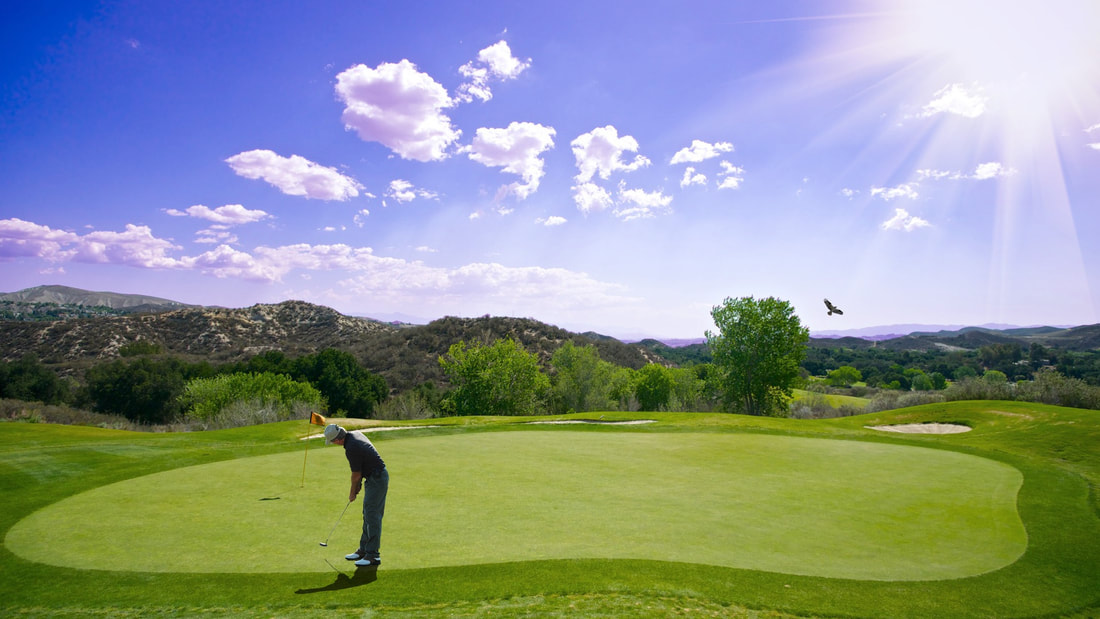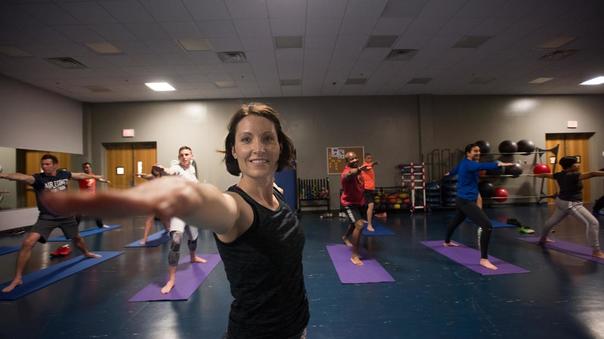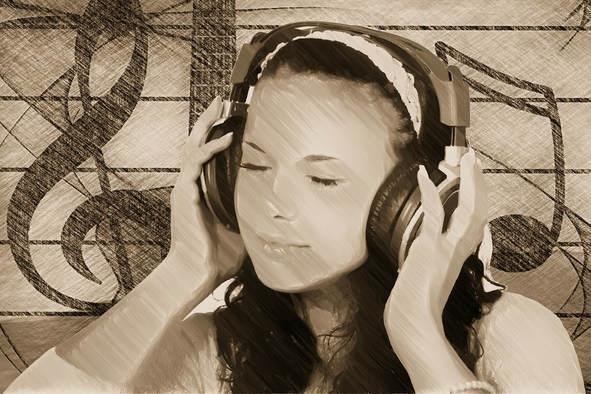In a normal, “waking” state, we are almost always completely immersed in whatever we are doing at the moment. We might even say that we are fully absorbed in here and now.
However, If the point of mindfulness is to be here and now, doesn’t that mean that we are meditating every time we are completely immersed in some activity? Whenever we exercise, play football, listen to music, watch TV, talk with our friend, think, or even fight – we are fully in the present moment, right? The tricky question Thinking this way, can we say that activities which typically consume our attention are also a sort of meditation? Well, no. We are lost in such activities. Usually, we are totally absorbed in playing the game, listening to music, exercising, whatever…and we have become that activity. Our consciousness is focused completely on it. Moreover, the answer to the previous question also depends on how we define meditation. Let’s use the broader meaning of meditation, that includes mindfulness. It means that we are meditating here and now, whatever we are doing, without any redundant contents of mind, aware of our surroundings and ourselves. When thoughts or emotions arise, we simply become aware of them, let them go and return to the Now. Can we say that activities which typically consume our attention are also a sort of meditation?
To live in the Now means to live consciously, to fully experience ourselves and our surroundings without redundant thoughts and distractions.
One could say that deep sleep is also a thoughtless state. That’s true, but it cannot be regarded as the living in the Now because it is not a conscious state. One could also say that while we are immersed in unnecessary thinking, we are in the Now too because we are experiencing those thoughts in the present moment. But that is also not a fully conscious state, as we are identified with those thoughts, so it’s not really being present in the Now. To live in the Now means to live consciously, to fully experience ourselves and our surroundings without redundant thoughts and distractions.
Mindfulness itself is a meditation which presumes our full awareness whether we are in the midst of an activity or doing nothing. Therefore, we can be fully mindful during any activity. Easier said than done…
Conscious action However, if we still have retained a certain “amount” of self-awareness, we will greatly enjoy the activity. We will be really delighted while dancing, playing, or reading if we are consciously present at the same time. We can be fully mindful during any activity. Easier said than done…
So, the catch is: whenever we are conscious both of ourselves and the activity, that will be true meditation. That is mindfulness.
This doesn’t mean that our consciousness is somehow being divided into two parts, one for the external event, another for our being. Or, if we retain a certain “amount” of consciousness for our being, it doesn’t mean “less” consciousness will remain for the outer activity. No, not at all. That simply means that we expand our consciousness, which encompasses both. Whenever we are conscious both of ourselves and the activity, that will be true meditation. That is mindfulness.
Portals into Now
Doing this way, we might turn any activity into a portal to Now, to Pure awareness, or Presence, which is typically the “goal” of meditation. But, to be honest, not every situation is equally suitable for mindfulness. There are activities which we usually conduct without much conscious effort (actions that are conducted on “auto-pilot”, like breathing, walking, feeling the inner body, eating, etc.), while other activities suck in our awareness completely (like thinking, listening to music, talking, and so on). Usually, we should begin our mindfulness practice with less demanding activities in a sense of conscious effort. We can consider those activities as portals into the Now. They could be:
To be honest, not every situation is equally suitable for mindfulness.
For instance, you can be aware of your breath and soon you will enter the state of Presence. Or you can consciously follow your steps during a walk. Also, you can simply be aware of your body and its sensations, of taste, visual textures, sounds, etc. Moreover, you can relatively easily be mindful while driving, as it’s a routine activity. Eating, drinking, and daily errands can easily bring you into the state of presence, as they are routines as well.
We can say that anything can be our portal to Pure consciousness. However, in the real world, there are many activities that are soaking up our attention and cannot be considered as portals, at least at the beginning of our practice. They actually challenge even many experienced mindfulness practitioners. But more on that later on.
Triggers for Mindfulness
Normally, we are driven to the Now only by our general intention and motivation to be mindful in everyday life, but that’s a pretty random and unreliable incentive. Hence it is advisable to take on a more systematic approach: use of mindfulness triggers – common and repetitive events or situations in everyday life, which serve as reminders for getting back into the Now. For example, the triggers can be:
How do we form and develop a trigger? “Visualize yourself in each of these trigger scenes, one by one. Imagine that in every single trigger you are becoming completely aware of both yourself and your environment. You have to visualize the most common concrete scenes from real life, in order to transmute them into functioning triggers for becoming present. Imagine the very moment in which you become fully aware. If possible, immediately after each imagined scene, do it in real life and really become mindful. Do this a few times for every scene, the more the better. This will definitely ‘cement’ these situations as the triggers for your mindfulness.”[1] [1] Excerpt from Inner Peace, Outer Success (Part III: Personal transformation) Visualize yourself in each of these trigger scenes, one by one. Imagine that in every single trigger you are becoming completely aware of both yourself and your environment.
Each trigger has to be part of a small “mindfulness habit.” As we know from scientific research, every habit has three components: cue, routine and reward. The trigger is the cue. Becoming mindful is the routine. And we have to choose what would be our best reward for becoming mindful. Although being mindful is reward by itself, we can, for example, congratulate ourselves every time we successfully use a trigger.
Meditation during exercising Sooner or later, we will want to extend our mindfulness practice onto more demanding activities. In other words, we will try to become fully conscious in numerous life situations that can be considered as more difficult for becoming mindful, as they tend to completely absorb our attention. Within that “group” of activities, I would say that exercising is one of the easiest for becoming present, as it is usually a routine sequence of certain movements. Sooner or later, we will want to extend our mindfulness practice onto more demanding activities.
The “Exercise Meditation,” as we could name it, would simply mean that you have to stay present while exercising. You are exercising, without thinking, being here and now, conscious of the environment and conscious of yourself. You are aware of movements of your body; you feel the tension in your muscles; you feel bodily sensations. But the catch is that you don’t lose yourself completely in that - you retain a certain level of self-consciousness all the time. Whatever comes into your focus that distracts your thoughtless awareness - perhaps a thought or an emotion - you just accept it as it is and return to the exercise, being completely present.
You can even listen to music while exercising, yes, but all the while you have to keep the awareness of yourself to a certain degree. That’s meditation. The “Exercise Meditation,” as we could name it, would simply mean that you have to stay present while exercising. You are exercising, without thinking, being here and now, conscious of the environment and conscious of yourself.
By doing this way, you will not only enjoy your exercises immensely more, but you will get a chance to gradually extend your conscious moments or periods to other parts of your day and completely transform your life. This is what mindfulness does to your life, after all.
Meditation and music What about listening to reading, talking, watching TV or listening to music? We will take an example of music. Many people find music distracting when it comes to meditation. Similar with thinking, watching movies, chatting, it often strongly sucks in your attention and awareness and you “wake up” only after the song is finished. As long as we succeed to use it as means for the expansion of our consciousness, music can be a great companion to our spiritual growth.
Music can help calm your mind and body, and gently lead you to a subtle sense of inner joy. Yet, to experienced mindfulness practitioners, it can also be considered as one of those portals to Presence. You just have to be fully aware and enjoy the music. Try to be aware of yourself and to enjoy the song. That will bring you a much deeper pleasure. But if you allow the music to completely overwhelm you, like the sweet taste of cake does, you will lose yourself and identify fully with that experience. That’s not meditation. That’s simply enjoying your life, without being much conscious, which itself is not bad at all. However, if you want to meditate or be mindful, you should stay fully awake, to be aware of yourself and of the inner or outer experience.
Try to be aware of yourself and to enjoy the song. That will bring you a much deeper pleasure.
Conclusion
At the beginning of our mindfulness practice, we have to discern simple, repetitive and habitual activities from more demanding ones that we are completely immersed in and are not as suitable for a steady development of our practice. We should move forth step by step, patiently and persistently, without forcing anything, as that may bring us only disappointment and self-blame. And we must not forget to be kind and compassionate, that’s essential for our practice, too! Have a great day! :-)
0 Comments
Your comment will be posted after it is approved.
Leave a Reply. |
Please note that most of the articles have a "Read More" break, which is sometimes hardly visible.
It is located at the bottom of visible part of the article, on the right side. To continue reading the article, click on that link. This page may contain affiliate links meaning we earn a commission if you use those links.
We only recommend pages we appreciate and trust. Archives
March 2023
Categories
All

|
For guest posts or placing ads on our website, please use the contact form on the 'About/Contact Us' page.









 RSS Feed
RSS Feed

